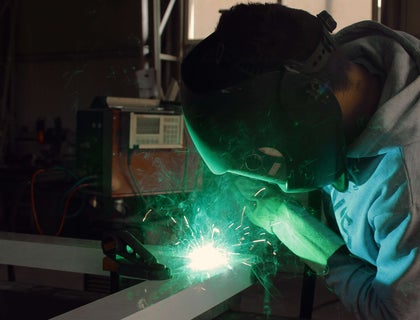How to Find a Skilled Welder:
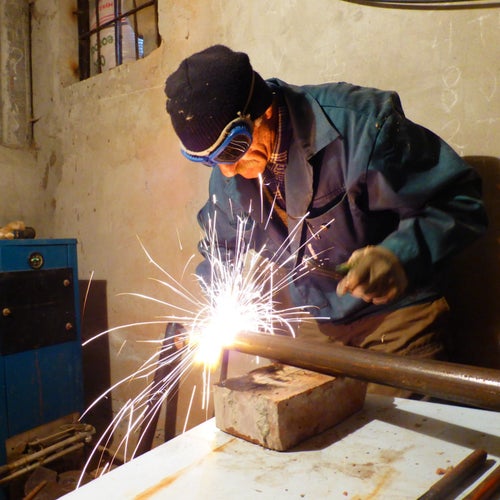
A step-by-step guide to finding and hiring the best welders for your construction or manufacturing company. Includes a full hiring process that will help you find and hire the best welders fast.
Attract the best talent.
Determine your requirements.
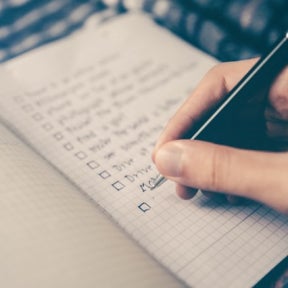
Before crafting your job description, determine your hiring needs. What type of welder are you searching for? What kind of certifications do they require? Also consider your industry and whether the candidate would need additional skills and experience to fulfill their duties.
Some aspects to consider include:
- The type of welding they'll be required to do.
- The industry, e.g. mining, oil & gas, engineering, construction, manufacturing, etc.
- The hours they'll be required to work.
- Any specific health risks involved.
- Physical expectations.
- Travelling requirements and location of the worksite.
- Licensing and certifications.
- Skill and experience level.
Craft an appealing job post.

Most welder job descriptions briefly introduce the company and the role before listing general job duties and the required skills, qualifications, and years of experience. A great job description should be very clear and truthful about what you are looking for in a welder and what you are offering.
To help you attract great candidates, the job post should include details regarding the benefits you offer and any other conditions candidates should be aware of, such as weekend work. While you will want to highlight the benefits of the job, which may include a comprehensive benefits package and financial assistance for continuing education/professional certifications, do not feel tempted to omit any negative aspects of the job.
Some benefits welders may be interested in include:
- Comprehensive health insurance, including vision insurance.
- Adequate training and workshops to improve skills.
- Paid leave days.
- Financial assistance for continuing education and professional certifications.
- Mentorship opportunities.
- Fair compensation and bonuses.
If there are any welders currently in your employ, find out what they value most about working at the company and include these aspects in your job description.
Provide a detailed list of the responsibilities and duties the role entails, the physical demands of the job, and the required skills and certifications.
Use a welder job description template to make it easier.
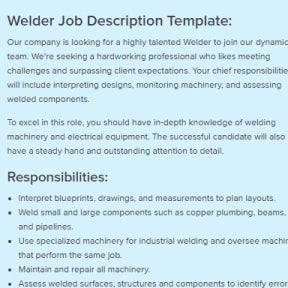
A welder job description template will provide much of the boilerplate information you'll need, such as the responsibilities, skills, and qualifications, making it a bit easier.
Use our welder job description templates to help you get started:
Establish a welding internship program.
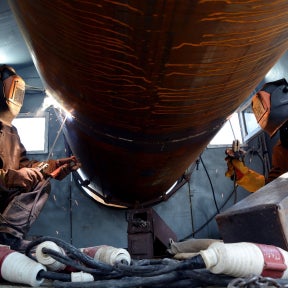
Starting a welding internship program will help you find and groom young apprentices and make an impression on potential employees. By training employees before hiring them, you'll be assured of the quality of their work, and their ability to complement your team.
Advertise the position.
Post your jobs to general sites, such as Indeed.
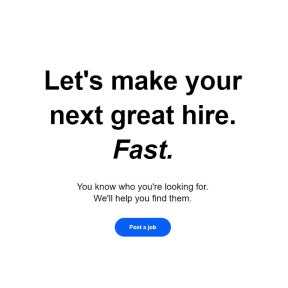
Start by posting to general job posting sites, such as Indeed. These are great places to start because they get plenty of traffic and they're free.
Make sure your job is picked up by Google.
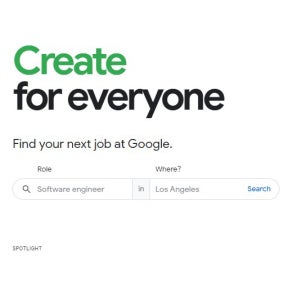
Google for Jobs allows your posting to be seen in search results. This can greatly increase your job visibility. You can get it picked up by Google by having someone properly format it on your website, or by using a service (such as Betterteam) that creates a properly formatted jobs page for you automatically.
Target job boards dedicated to welding.
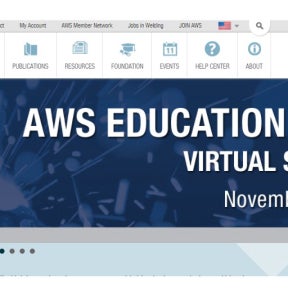
Posting your positions on welding job boards such as WeldGuru.com or the American Welding Society's job board will increase your chances of reaching skilled welders.
Vet your candidates.
Screen your applicants.

Despite clearly listing the specific skills and certification requirements in your job posting, you will likely receive many applications that do not meet the exact criteria. To ensure that you only consider applicants that meet your basic requirements, send an email with a few questions, such as:
- How long have you worked as a professional welder?
- Can you provide a summary of the welding projects you have worked on?
- Are you willing to travel and/or relocate?
- What certifications do you have?
Include questions regarding the specific welding tasks, techniques, and processes you expect candidates to have experience with, as well as the type of materials they should have extensive experience working with. These details will help you filter the applications you receive before beginning the interview process.
If you receive a considerable number of applications, consider investing in applicant tracking systems (ATS) and resume parsing software, as these will help streamline the recruitment process.
Conduct a phone interview.

Phone interviews are a great way to learn more about the candidates you have under consideration before setting aside more time for a weld test and an in-person interview. This first round of interviews serves to get to know the candidates a little better and to find out more about their work history and interest in the position.
During the phone interview, have them give you a brief overview of their training and experience and check whether their answers match their resume and the answers they gave to the screening questions.
Some example questions include:
- Why did you leave your last welder job?
- What are your salary and benefits expectations?
- Are you willing to travel or relocate for work?
- What type of training and certifications do you have?
- What additional skills and experience do you have that's relevant to this role?
- What did your previous job entail?
At this point, you want to find out if there is anything that disqualifies candidates, either in terms of their skills or their expectations. For example, if their benefits or salary expectations do not match what you are willing to offer or the candidate reveals they are reluctant to work weekends or over-time, they may not be a good fit.
Look for competent candidates whose expectations are in line with what you're offering and be sure to highlight aspects of the job that most interest them.
Meet the candidates and evaluate their skills.
Schedule a weld test.
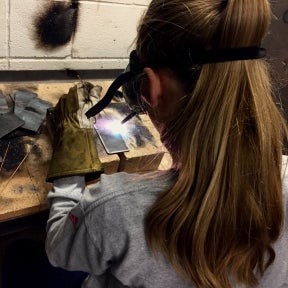
To properly assess whether a candidate has the skills and abilities their certifications and resumes claim they have, you'll want to set up a weld test to verify that their work is up to code and that all welding procedures are followed
Candidates should show up equipped to weld, meaning that they should be wearing protective clothing and work boots, and bring along their welding jacket, helmet, and work gloves.
Conduct an in-person interview.

Once you have established that a candidate has the necessary skills and otherwise meets the criteria outlined in the job description, you'll want to set up an in-person interview to get to know them better and find out more about their work ethic, whether they seem reliable, and how they would get along with your team.
This is also an opportunity to show them around the work floor and introduce them to some of the team members. Following this, ask them about their impression and whether they can see themselves fitting in, before reiterating the benefits and perks you offer.
Some examples of interview questions to ask:
Pay attention to each candidate's reactions to the workplace and their interactions with staff members, as this will give you an indication of how well they might fit in.
It's best to prepare a list of interview questions ahead of time. Have a look at our welder interview questions for some ideas.
Hire your new welder.
Make an offer.

When you have made a final decision as to the candidate you would like to hire, you'll want to make them an offer without delay. This is typically done in two stages, the first being a verbal confirmation that you would like to offer the candidate the position, and the second being a written job offer.
Give them a call and let them know that you would like to have them on board and follow this up with an email or letter with a formal job offer including the details of the position, salary, and benefits.
Use our job offer letter template to craft a compelling and professional letter.
Onboard your new welder.
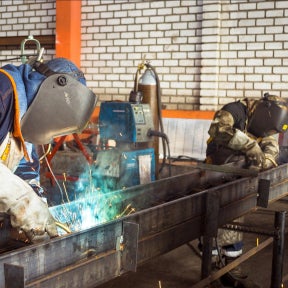
Onboarding is a key final step in the hiring process that is not to be overlooked. Make a good first impression and get the new hire up and running fast by having a detailed and organized onboarding process.


